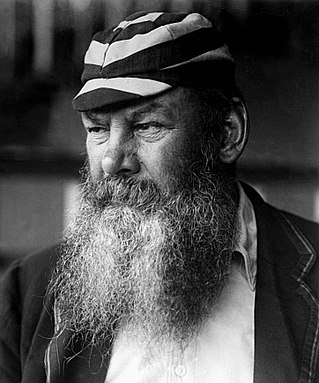
William Gilbert Grace was an English amateur cricketer who was important in the development of the sport and is widely considered one of its greatest players. He was nominally amateur as a cricketer, but he is said to have made more money from his cricketing activities than any professional cricketer. He was an extremely competitive player and, although he was one of the most famous men in England, he was also one of the most controversial on account of his gamesmanship and moneymaking.
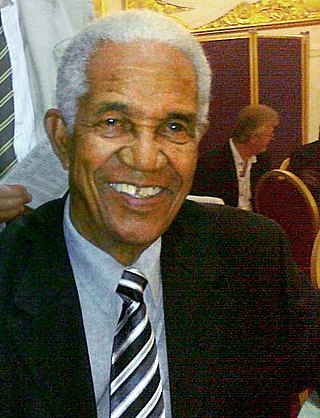
Sir Garfield St Aubrun Sobers, AO, OCC, also known as Sir Gary or Sir Garry Sobers, is a former Barbadian cricketer who played for the West Indies between 1954 and 1974. A highly skilled bowler, an aggressive batsman and an excellent fielder, he is widely considered to be cricket's greatest ever all-rounder and one of the greatest cricketers of all time.

The Oval, currently named for sponsorship reasons as the Kia Oval, is an international cricket ground in Kennington, located in the borough of Lambeth, in south London. The Oval has been the home ground of Surrey County Cricket Club since it was opened in 1845. It was the first ground in England to host international Test cricket in September 1880. The final Test match of the English season is traditionally played there.
The 1970 VFL season was the 74th season of the Victorian Football League (VFL), the highest level senior Australian rules football competition in Victoria.
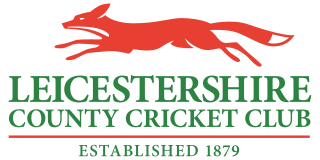
Leicestershire County Cricket Club is one of eighteen first-class county clubs within the domestic cricket structure of England and Wales. It represents the historic county of Leicestershire. It has also been representative of the county of Rutland. The club's limited overs team is called the Leicestershire Foxes. Founded in 1879, the club had minor county status until 1894, when it was promoted to first-class status pending its entry into the County Championship in 1895. Since then, Leicestershire have played in every top-level domestic cricket competition in England.

The Queen's Park Oval is a sports stadium in Port of Spain, Trinidad and Tobago, used mostly for cricket matches. It opened in 1896. Privately owned by the Queen's Park Cricket Club, it is currently the second largest capacity cricket ground in the West Indies with seating for about 20,000 spectators.

Manuka Oval is a sporting venue in Canberra, the capital of Australia. It is located in Griffith, in the area of that suburb known as Manuka. Manuka Oval has a seating capacity of 13,550 people and an overall capacity of 16,000 people, although this is lower for some sports depending on the configuration used. The area on which the ground is situated has been used for sport since the early 20th century, but was only enclosed in 1929. It has since undergone several redevelopments, most recently beginning in 2011.

Winston Anthony Lloyd Cozier was a Barbadian cricket journalist, writer, and radio commentator on West Indian cricket for over fifty years. Scyld Berry wrote that he was both the voice and the conscience of West Indian cricket, the latter because of his harsh criticism of the West Indian board for "squandering the money and legacy that it had inherited".

Wilton H. St Hill was a West Indian international cricketer who played in West Indies' first Test match during their inaugural Test tour of England. A right-handed batman who played in a variety of batting positions, he represented Trinidad in first-class cricket between 1912 and 1930 and played in three Test matches in total. Although his Test record was poor, he was highly regarded in Trinidad. In particular, writer C. L. R. James considered St Hill to be among the top batsmen in the world and dedicated a chapter of Beyond a Boundary to him. At the peak of his career, Lord Harris described him as the best batsman in the West Indies.

Alberton Oval is a sports oval located in Alberton, a north-western suburb of Adelaide, South Australia. It has been the home of the Port Adelaide Football Club since 1880. The ground is a public park and is exclusively leased to Port Adelaide for Australian rules football.

Arden Street Oval is a sports oval in North Melbourne, Victoria, Australia. It is currently the training base of the North Melbourne Football Club, an Australian rules football club, and up to the end of the 1985 season it was used as the team's home ground for Victorian Football League (VFL) matches.

The East Melbourne Cricket Ground was a grass oval sports venue located at the corner of Wellington Parade and Jolimont Parade, in East Melbourne, Victoria, Australia. Now part of Yarra Park and being adjacent to the Melbourne Cricket Ground, the site is best known for playing host to many sporting events during the city of Melbourne's early existence, consisting mainly of cricket and Australian rules football, although the ground occasionally hosted soccer matches.

The Otago cricket team, nicknamed the Volts since the 1997–98 season, are a New Zealand first-class cricket team which first played representative cricket in 1864. The team represents the Otago, Southland and North Otago regions of New Zealand's South Island. Their main governing board is the Otago Cricket Association which is one of six major associations that make up New Zealand Cricket.
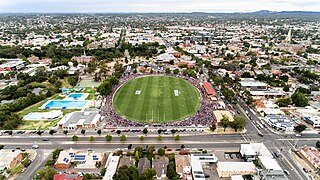
Queen Elizabeth Oval is a sports stadium located in Bendigo, Australia primarily used for Australian rules football and cricket.
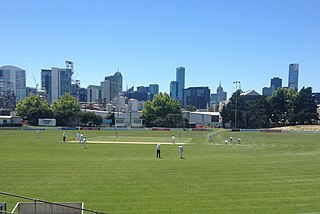
North Port Oval, also known as the Port Melbourne Cricket Ground or by the sponsored name ETU Stadium, is an Australian rules football and cricket stadium located in Port Melbourne, Australia. The capacity of the venue is 6,000 people. It is home to both the Port Melbourne Cricket Club and the Port Melbourne Football Club.

From May to September in 1878, an Australian cricket team made the inaugural first-class tour of England by a representative overseas side. In October, the Australians played additional matches in the US and Canada on their return journey. The tour followed one made by an England team to Australia in 1876–77, during which the first matches retrospectively given Test match status were played. None of the 1878 matches had international status, nevertheless the tour proved to be such an outstanding financial and sporting success that the future of international cricket was assured.
The Parsi tour of England in 1886 was the first cricket tour of England by a team from India. While the tour was singularly unsuccessful in terms of results, it paved the way for another trip by the Parsis two years later and more tours by English teams to India in the next decade.

Drummoyne Oval is a multi-use sports ground in the Sydney inner-west suburb of Drummoyne, New South Wales. The ground has been used for international women's cricket matches, domestic men's cricket matches and first grade rugby league as well as local Australian rules football and Rugby Union games.

Hagley Oval is a cricket ground in Hagley Park in the central city of Christchurch, New Zealand. The first recorded match on the ground was in 1867, when Canterbury cricket team hosted Otago cricket team. Canterbury used the ground infrequently from then through until the 1920s, but hardly stopped during World War I.
Cricket is one of the most popular sports in Western Australia. The governing body of the game in WA is the Western Australian Cricket Association (WACA). Western Australia is represented at Sheffield Shield and domestic one-day level by the Western Warriors, and in the Big Bash League by the Perth Scorchers.

















